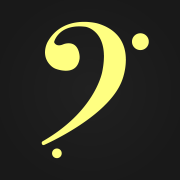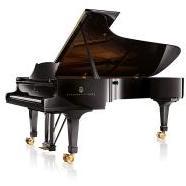Search the Community
Showing results for tags 'piano'.
-

sonata Sonata for Oboe and Piano - The story of a warrior
Jean Szulc posted a topic in Chamber Music
Hello everyone! I've just posted my latest (and hopefully greatest) work yet. It's a Sonata for Oboe and Piano, which I've beew working on for the past month. The first and second movement took me 3 days to write, altought I altered them quite a bit. The last movement actually took a few weeks, as I had to experimetn with polychords (I had never used them before). Also, thank's to @Monarcheon for posting the masterclass on polychords, that's what stroke my interest on them! After listening to it various times, the image of a warrior that was cast on to an adventure, in which he met various conditions and exotic creatures really fit the mood, so I decided to name the movements accordingly. So, here's the link to it! As always, feedback is greatly apreciated. Best wishes, Jean. -
Didn't like the old c major nocturne so tried to make a new one. Please do leave feedback.
-
Hypothetically, if you were doing admissions at a music school and I, an inexperienced but very enthusiastic High School senior, submitted this along with another (choral) piece, would you want to let me in to your school? Just a hypothetical. There's a few last minute changes I still need to make to this one before I submit. It's definitely one of my busiest pieces and i'm not a good piano player so i'm having a hard time editing this to make it playable without compromising my vision. Please let me know your thoughts (preferably before Sunday).
-

symmetry Aldor: Song Cycle for Cello & Piano [POOR FORM ENTRY]
Tónskáld posted a topic in Chamber Music
I present, for your listening enjoyment (or revulsion), my entry for the Poor Form competition: Aldor, a song cycle for cello and piano. This work is a study in symmetry. As you're probably aware, tonality in music is determined by asymmetry; the intervals between notes in major/minor scales are arranged in certain tone-semitone patterns from which the human ear can determine a "home" or key for the scale. By introducing symmetry into the 12-tone scales that Western music uses, one removes a sense of tonality and instead produces atonality. French composer Olivier Messiaen further explored this in his work, "The Technique of My Musical Language." He fleshed out 7 symmetrical scales, which he called modes of limited transposition. These symmetrical scales form the basis of the harmonies you're about to listen to. The word "Aldor" is Old English, and means "life" or "vitality." This work, in impressionistic style, describes a life cycle from beginning to end—itself a form of symmetry. The opening theme is developed and undeveloped gradually across five movements, each representing a milestone in a life cycle. I have given a brief description of each movement below. Waccan. From an Old English word meaning "awakening," the opening movement presents the "cycle theme" via solo cello—simple and unadulterated. After that, the cello and piano conflict with each other in a murky 5/4 meter, closing in an F# major chord. The symmetrical scales used here are Messiaen's 1st and 2nd modes. Astígnes. This movement, meaning "a rising up or ascension," begins with a piano rendition of the cycle theme. It is afterwards joined by the cello in a dance-like rhythm and tune, reminiscent of a bouncing toddler or an empire sputtering to life. This movement features Messiaen's 2nd and 3rd modes. Hréð. The mesial movement means "triumph, victory," and represents the power of the height of a life cycle. Piano and cello combine to bring the cycle theme, followed by the most dramatic 4 minutes of the entire song cycle. This movement boasts the most virtuosic passages for cello and piano, and is based on Messiaen's 4th mode. Sweðrung. The fourth movement mirrors the second in some ways: the piano brings the cycle theme, and the tempo and rhythm are scherzo-like. However, this movement, meaning "corruption or decline," is in a disturbing 5/8 meter and lacks the "major" overtones of the second movement. It uses Messiaen's 5th mode. Ellorsíþ. The finale begins with an emotional delivery of the cycle theme by the solo cello, which is afterward joined by piano in a slow, rhythmic 9/8 meter, reminiscent of a boat sailing to undying lands (the title means "departure, journey to beyond"). Like the 4th movement, this movement mirrors the first. It also contains themes from every movement that came before it, albeit in reverse order: 4th movement themes come before 3rd movement themes, and so forth. The ending epilogue begins with a simple restatement of the cycle theme from the cello, finally joined by the piano as the cycle closes in a whispered F# major chord. This movement is based on Messiaen's beautiful 6th mode, which contains the 1st mode (cf., the first movement). This was a lot of fun to put together, and I'm grateful for the structure this competition provided! Here's a link to the songs via SoundCloud: As an amateur linguist, I would be remiss if I didn't provide some guidance on the pronunciation of the titles. So, I'll leave you with that: Waccan—WAHK-kahn; Astígnes—ah-STEEG-ness; Hréð—HRAYDH*; Sweðrung—SWEDH*-roong; Ellorsíþ-EL-lor-seeth* *"dh" is a voiced th as in they; "th" is an unvoiced th as in thanks -
Piece No.5 Op.3 in C Major - "A Daydream". This is my first attempt in composing a romantic "Ballade" - like piece. It is slightly inspired by works of composers of the romantic period, such as Franz Liczt, Felix Mendelssohn and others. This piece is considered to be a ballade or nocturne and it follows the simple pattern A - B - C - A: A: main theme in C Major B: first intermediate theme in C Major C : second intermediate theme in F Major Thank you for listening and I hope you enjoy! Comments are welcome!
-
I'd like some feedback on this minuet & trio I composed for piano. It's my first finished piece for piano (I don't play it), so I'm not sure if it's all playable and stuff. I tried to do this thing where the first theme is in A lydian and the second theme is in E mixolydian, so as to "swap key signatures", but I feel like I never really leave A. I appreciate any feedback 🙂
-
Sometimes I like to visit this style, my way. Nocturno en octubre.pdfNocturno en octubre.mp3
-
https://youtu.be/MS4MDqMA1i4 ^music with score appreciate criticism
-
A little and quiet piece for this month. November.pdfNOVIEMBRE.mp3
-
Composition completed on: Fantasie-Impromptu №1 in G minor ICO №75 - 04/30/2016 Fantasie-Impromptu №2 in C sharp minor ICO №80 - 05/17/2016 You also can watch these pieces here -
- 2 replies
-
- cyberpianist
- gareev
-
(and 3 more)
Tagged with:
-
Composition completed on: Etude №4 in A minor ICO №119 - 02/09/2017 Etude №5 "Shadows" in B flat minor ICO №120 - 02/14/2017 You also can watch these pieces here -
-
Hello everyone I would like to share this melody. Please give me your opinion : Thank you, G.
- 3 replies
-
- melody
- composition
-
(and 1 more)
Tagged with:
-
Hello, this is a piece of mine for a contest where I had to stick to the chord progression vi-IV-I-V and make it around 2:20 or less. Since this is my best work so far, I would like some criticism or advice on anything. Thank you. Arctic Petals (Score + Audio)
-
Hi! I'm new here. I would be pleased if somebody gives me some feedback to this pice, is the last movement of a sonata for two pianos I'm writing: 3rd Movement Finale: Allegro Maestoso (3).mp3 Allegro Maestoso (1).pdf I advice that the pice it is not finished and that the coda is temporary. The sonata is called "Emperor " because is inspired in those gigantic paintings of battles. For creating the sensation of movement and horses moving there is this rhythm appearing most of the time in the pice: Thank you! 🙂
- 2 replies
-
- 2
-

-
- two pianos
- piano
-
(and 1 more)
Tagged with:
-
https://drive.google.com/file/d/1-Xs1G5fupIjZPYNOiLDBoq7EijalRdUI/view?usp=sharing Recording on the way hopefully.
- 2 replies
-
- 1
-

-
- piano
- percussion
-
(and 3 more)
Tagged with:
-
"Marcia Funebre" for Piano Here a little funeral march that proably I will generate a more developed pice from it: Marcia Funebre (3).mp3 Marcia Funebre.pdf Open for suggestion and feedback! ADVICE! The dynimic notation is still not finished.
- 3 replies
-
- 4
-

-
- marcia funebre
- solo piano
-
(and 2 more)
Tagged with:
-
Composition completed on 12/16/2015 You also can watch this piece here -
-
Hello all :), It's my little piano composition. I' m self- taught musician so please, be understanding. :)
-
Composition completed on 08/14/2015 You also can watch this piece here -
- 3 replies
-
- 1
-

-
- cyberpianist
- gareev
-
(and 2 more)
Tagged with:
-
Composition completed on 05/12/2015 You also can watch this piece here -
-
Composition completed on 10/28/2015 You also can watch this piece here -
-
This is my "Three Sententiae for Two Pianos, Op. 323". It is my first work for the combination of two pianos. I never would have imagined I would compose for that particular combination. However, the idea to compose a set of sententiae came to me almost six months ago, on the day I attended the concert of a piano duet. And so I have realized it now, six months later.
- 2 replies
-
- two pianos
- piano
-
(and 2 more)
Tagged with:
-
https://musescore.com/user/20408661/scores/5815863 Trying to make sure this is as good as it can be before I attempt to get a live recording for college pre-screening (due dec. 1st), any info regarding my composition will be helpful. Midi percussion sounds bad but not much I can do about it. If there are any formatting errors please call me out, I need this to be as clean as possible. Also should I change the name to something more interesting? If so what are some suggestions that fit the aesthetic and sound of the piece. Thank you!
- 2 replies
-
- piano
- percussion
-
(and 2 more)
Tagged with:
-
Hello all. I have recently remembered about this piece that I composed for a workshop back in June. The pieces were recorded at the end of it, and I can share it with you now. I decided to write for Piano Trio. The movement starts and ends in A major, but has sections in other keys. It is in a rough sonata form with two contrasting themes. The main idea has a seemingly random dotted rhythm, but it actually fits in a 5/4 beat shown at the end. The second theme also fits into the 5/4 section for its recapitulation. I am mostly happy with the recording, except for perhaps the final few bars. We only had one rehearsal before the performance and recording so I thin kwe did well. Any mistakes by the violin and cello are due to under rehearsal - any mistakes by the piano are due to me not practising enough beforehand! Hope you guys like it.
-
- 2 replies
-
- music composer
- composer
-
(and 18 more)
Tagged with:







